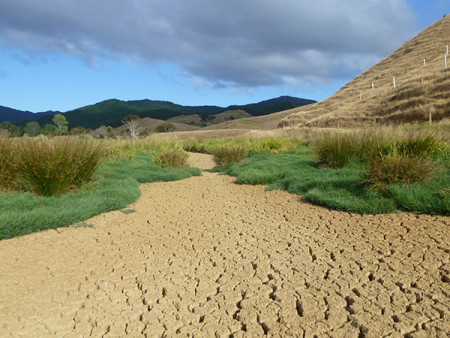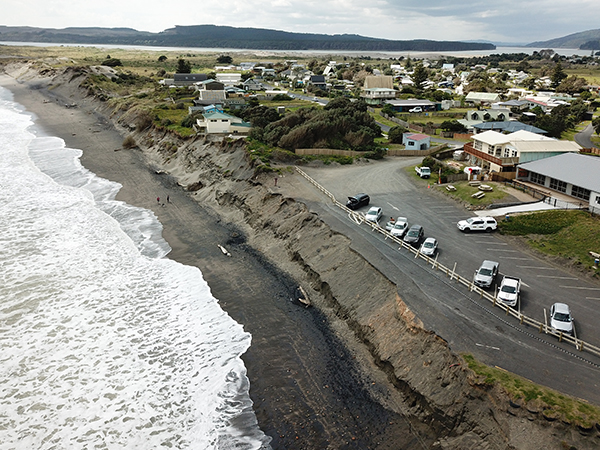"It is a fantastic reference document for anyone wanting to understand projected climate change and risks for our region"
– Whitney Mills.

The effects of drought at Waitekuri in the Coromandel, March 2020
A new report provides an overview of known climate hazards and risks in the Waikato region.
Titled ‘Waikato Regional Climate Change Hazards and Risks’, the technical report was recently published by Waikato Regional Council bringing together our region’s knowledge of climate change hazards and current and future climate risks.
The report identifies possible risks (consequences) from climate induced hazards such as extreme weather, rainfall and flooding, coastal inundation and erosion, dryness and drought, temperature increases, landslides and erosion, increased fire weather and sea level rise.
"The report is a first of its kind for the region and will help the 11 local councils in the Waikato region with climate adaptation planning," says report co-author, Whitney Mills who is a senior regional hazards advisor with Waikato Regional Council.

Some homes have already become uninhabitable in Port Waikato due to major sand dune erosion
"It can help iwi, businesses and communities to understand and respond to risks that may be relevant to them. It will play a key role in helping the regional council prioritise its own adaptation responses across the region."
Ms Mills says the report summarises approximately 240 direct risks and 40 indirect risks which were identified in an earlier project. It includes a high-level hazard and risk exposure map for each local council area that shows where the identified hazards and risks occur now and may occur in the future.
"There are different levels of climate hazard and risk across the districts and understanding this helps us to prioritise our work."
The report notes that Waikato residents already live with the impacts of a changing climate. These impacts and risks will increase over time, with some impacts already locked in. Other impacts can be influenced by our emission reduction and adaptation efforts.
Over the next century, the report says, the Waikato region can expect rising sea levels, more extreme weather, warmer summers and milder winters with seasonal rainfall shifts. Drought and fire risk will likely increase in the north and east over spring and summer leading to likely water security risks, and seasonal changes in rainfall and wind may occur in the west.
The risks in the report were identified in partnership with a wide range of stakeholders, drawing on knowledge from iwi, subject matter experts and external stakeholders. The risks include a combination of direct and indirect impacts to people, the natural environment, the economy, the built environment and governance/institutions. A team of council experts on risk, hazard, spatial and policy were involved in the project.
"The report pulls together into one location our current knowledge of climate change hazards, how different climate projections may influence the hazards across the region and the climate risks both now and into the future.
"It is a fantastic reference document for anyone wanting to understand projected climate change and risks for our region," says Ms Mills.

